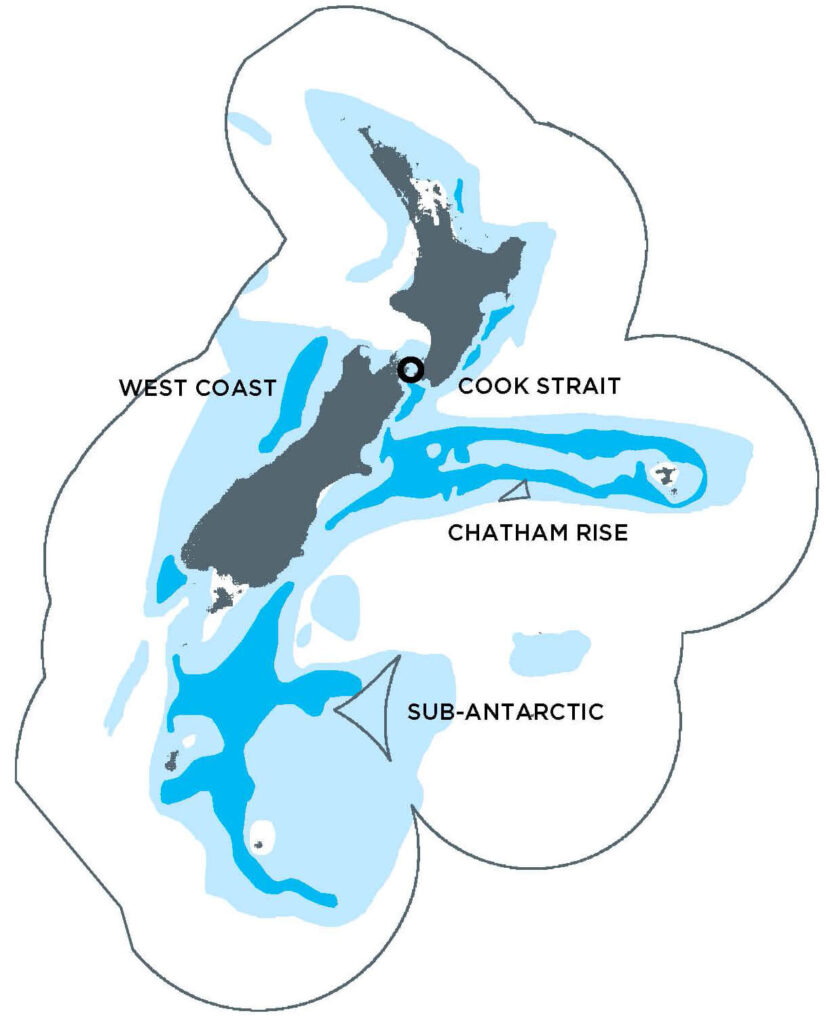Sealord is the only major seafood retail brand across Australia and New Zealand that catches our own fish. We take enormous pride in that, and it also means we can be very transparent with how and where our fish is caught. As New Zealand’s largest seafood company, we take our responsibilities seriously and that includes ensuring we are open and honest about how we fish.
We catch Hoki in New Zealand’s deep ocean in four key areas as marked on the map. The majority of Hoki used in our crumbed retail products comes from the Cook Strait and is caught between May and September each year. You can find out more about Hoki here.

Most Hoki used in our retail products is caught on our fresher vessel, the Thomas Harrison, a trawler that catches fresh fish for processing in our Wetfish factory in Nelson. We also catch Hoki on our factory fishing vessels, depending on the time of year.
All Hoki in New Zealand is caught using a trawl method of fishing. The majority of Hoki is caught by mid-water trawl (in the Cook Strait, and west and east coasts of the South Island) and some is caught by bottom trawl depending on the location. New Zealand’s deep seas are abundant in fish that provide people with healthy nutrition. Fish like Hoki live near the seabed, so we fish for them there by mid-water or bottom trawl. Trawling is the most common commercial fishing method in New Zealand.

Bottom trawling for hoki is a practical and fuel efficient fishing method where a net is towed on limited areas of sandy gravel seabed, where large amounts of target fish species live.
We use technology to precisely find fishing grounds, avoid rocks and to monitor and adjust each trawl. This improves fuel efficiency and how we use our vessels and crew, which helps to lighten our trawling footprint.
Like any type of food production, bottom trawling has an impact. But unlike other food production, the area we trawl is very limited.
New Zealand has one of the largest ocean territories (also called our exclusive economic zone, or EEZ) in the world. However, less than three per cent of the seabed in our territory is trawled each year. Fishers return to the same grounds annually and use fewer trawls to catch the same amount. To replace the amount of food our fisheries provide would require an extra 1.4 million football fields of land cleared for agriculture.
It is important to measure, understand and manage the effects of any type of food production. Commercial fishing is one of the most tightly regulated and studied food production industries in New Zealand. Using technology such as satellite global positioning systems, our trawling activities are monitored by and reported to Fisheries New Zealand. This informs better fisheries management. For more information on our fishing practices, you are welcome to click here Fishing Practices | Sealord. You may also be interested in this.
Wild-caught New Zealand hoki has some of the lowest greenhouse gas emissions and best nutritional value of any farmed food. Fish delivers twenty times more essential nutrients per unit of C0₂ compared to beef or lamb. In fact, there’s more key nutrients in 100 grams of hoki than in any other meat protein. Find out the science behind this here.
With no need for pesticides, fertiliser, or antibiotics, and minimal freshwater usage, hoki stands apart from the environmental impact of farming beef, chicken, or pork.
Choosing fish is not only best for your health, but also the right choice for the environment. For more information, we’d encourage you to visit www.seasmatter.co.nz